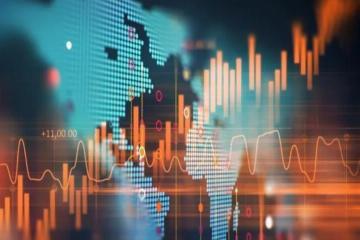How Will the Global Economy Land?
Advertisements
As we approach November 2023, the economic landscape in the United States appears increasingly anxious, with predictive models estimating a 47.31% probability of recessionThis marks a stark contrast to the downturns witnessed since 1990. Economic analysts are rigorously dissecting an array of risk factors, including high interest rates, geopolitical tensions, and a growing wave of de-globalization, all contributing to the prevailing sense of uncertaintyThe prevailing hope, of course, is that the narrative surrounding this potential recession might remain optimistic, diverging from the past patterns that have often led to financial turmoil.
Drawing historical parallels, one cannot help but reflect on the Federal Reserve's actions in 2004 when it began to raise interest rates, ultimately contributing to the bursting of the housing bubble and paving the way for the global financial crisis of 2008. At that time, former Fed Chairman Ben Bernanke illustrated the relationship between monetary policy and economic performance through a metaphor likening it to driving a car—where the application of the accelerator (interest rates) must be carefully calibrated to achieve a soft landing for the economy
Advertisements
However, as he pointed out, the challenge lies in the unpredictability of information and the expectations within the private sectorThe delicate balancing act of raising rates during an inflationary period while also reducing them in times of economic cooling proved to be exceedingly complexThe eventual response to the crisis saw the Fed drastically reduce interest rates and embark on an extensive quantitative easing program.
Today, as the Federal Reserve nears the end of another significant rate hike cycle, the question arises: how will the economy land this time? Notably, the current interest rates reflect a cautious optimism tempered by the recognition of three major risk factorsThe first is the suppressive effect of high interest rates on economic activity, suggesting a more nuanced understanding of Bernanke's metaphorIn contemporary terms, the speed of the economy cannot simply be likened to the ordinary act of pressing the gas pedal; rather, it hinges on the collective expectations regarding the average pressure applied throughout the journey
Advertisements
This encapsulates the critical role of investor sentiment and market pricing mechanismsThe U.STreasury yield curve, often seen as a reliable indicator of economic health, can inform the probability of impending recessionsAs the yield curve suggests an increasing probability of recession, the sentiment within the financial markets has shifted, with recent layoffs at major American financial and tech firms hinting at an atmosphere fraught with unease.
The second strain of risk comes from geopolitical uncertaintiesIn early 2022, what many forecasted to be a brief conflict has evolved into a prolonged engagement, casting shadows over global supply chains, energy resources, and food availabilityThe ramifications extend beyond immediate conflicts, influencing economic ties between major powers such as the United States and China, while also highlighting the profound impacts of climate change and demographic shifts on economic systems
Advertisements
Although the Global Geopolitical Risk Index has decreased from its peak amidst the conflict, it remains concerningly high, indicative of ongoing pressures that could destabilize economic growth.
Lastly, the specter of de-globalization looms large, retracting the promise of resource optimization that globalization has historically providedGlobalization has facilitated the better allocation of resources across borders, amplifying comparative advantages that serve as a catalyst for economic expansionThe reversal of this trend, however, portends a future of diminished economic prospects, potentially stymying growth rates worldwide.
Moreover, various reports from institutions such as the International Monetary Fund (IMF), the World Bank, and the Organisation for Economic Co-operation and Development (OECD) have also flagged additional risks, including global inflation pressures, the fluctuating state of the Chinese economy, lingering fallout from the COVID-19 pandemic, the strengthening U.S
- The Perils of Pump and Dump Manipulation
- Fed's Tight Grip on Inflation Amid Trade Slowdown
- Economic Data Weighs on U.S. Treasury Yields
- BTL: The Largest Money Market ETF
- GDX: A Prominent Precious Metals ETF
dollar, and potential capital flight.
A comparative analysis with the pre-2008 financial crisis period reveals further compelling insightsBack then, the upper limit of the federal funds rate was set at 5.25%, whereas it currently hovers around 4.75% as of February 2023. Anticipation grows that a rise to or beyond the 5% mark could occur in the first half of the yearDespite a slowdown in the pace of interest rate hikes, the recession probability continues to rise, climbing to 47.31% by November 2023—surpassing the early 2008 peak of 41.71%. In contrast, the geopolitical risk index now stands at a significantly raised 99.6, as per January 2023 readings, up from 94.49 in September 2007. Finally, the uncertainty index regarding economic policy indicates a troubling figure of 343.68, compared to a mere 93.1 before the 2008 crisis, reflecting serious concerns among investors.
In closing, the prospect of a recession in the U.S
